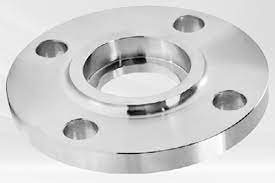Socket weld flanges are critical components in piping systems, offering a reliable means of connecting pipes. However, their installation requires precision and adherence to specific procedures to ensure optimal performance and longevity. Mistakes during the installation process can lead to leaks, structural weaknesses, and other complications. To prevent these issues, it’s crucial to be aware of common errors and take steps to avoid them.
Lack of Proper Preparation
One of the primary mistakes made during socket weld flange installation is inadequate preparation. Neglecting to properly clean and prepare the pipe ends and flange surfaces before welding can compromise the joint integrity. Any dirt, rust, or debris present can hinder proper fusion, leading to weaker connections and potential leaks. To avoid this, ensure thorough cleaning of both the pipe ends and the flange mating surfaces using appropriate cleaning tools.
Incorrect Fit-Up of Components
A precise fit-up of the pipe and flange Socket Weld Flanges essential for a robust socket weld joint. Misalignment or poor fit-up can result in uneven welding, creating stress concentrations and weakening the joint. Always check the alignment and ensure proper fit-up of the components before welding. Using alignment tools and techniques can assist in achieving the correct positioning, minimizing errors during installation.
Improper Welding Techniques
Using incorrect welding techniques is a significant error in socket weld flange installation. Inadequate welding procedures, such as overheating, underfilling, or improper bead formation, can compromise the joint’s integrity. Follow recommended welding procedures and standards, maintaining appropriate heat inputs and electrode angles to achieve a sound weld. Proper welding techniques ensure a strong, durable connection that resists leaks and structural failures.
Insufficient Weld Penetration
Insufficient weld penetration is a common issue that weakens socket weld flange joints. Failing to achieve proper penetration depth during welding can result in incomplete fusion, leading to joint failure under pressure or stress. Adequate penetration is crucial for the joint’s strength and integrity. Ensure the weld penetrates fully into the root of the joint, following recommended welding parameters and techniques.
Neglecting Post-Welding Inspections
Post-weld inspections are vital for verifying the quality of the socket weld joint. Neglecting these inspections can result in undetected defects or errors, potentially leading to failures during operation. Perform visual inspections, non-destructive testing (NDT), or other relevant examinations as per industry standards to ensure weld quality. Identify and rectify any issues promptly to prevent future complications.
Incorrect Use of Consumables and Materials
Using incorrect consumables or materials during socket weld flange installation can compromise the joint’s integrity. Incompatible filler materials or low-quality consumables may lead to weaker welds susceptible to corrosion or mechanical failure. Always use materials that comply with specifications and are suitable for the intended service conditions. Choosing the right filler materials and adhering to material standards is crucial for the joint’s reliability.
Neglecting Stress Relief and Heat Treatment
Failure to perform stress relief or proper heat treatment after welding can contribute to joint failures. Welding introduces residual stresses that, if not relieved, can affect the joint’s structural stability over time. Follow recommended stress relief procedures or heat treatment methods to minimize residual stresses and enhance the joint’s resistance to fatigue and cracking.
Conclusion
Socket weld flange installation demands meticulous attention to detail and adherence to proper procedures to ensure robust, leak-free connections in piping systems. Avoiding common mistakes such as inadequate preparation, incorrect fit-up, improper welding techniques, insufficient penetration, lack of inspections, incorrect material use, and neglecting stress relief measures is crucial for achieving durable and reliable socket weld joints. By recognizing these errors and taking proactive measures, installers can enhance the performance and longevity of socket weld flange connections in industrial applications.

